The most commonly used adaptive golf cars
Golf courses and facilities globally are embracing (not resisting) the opportunity to provide access and inclusion to golfers with disabilities through the improved availability of adaptive golf cars and adopting policies and procedures that welcome ALL golfers.
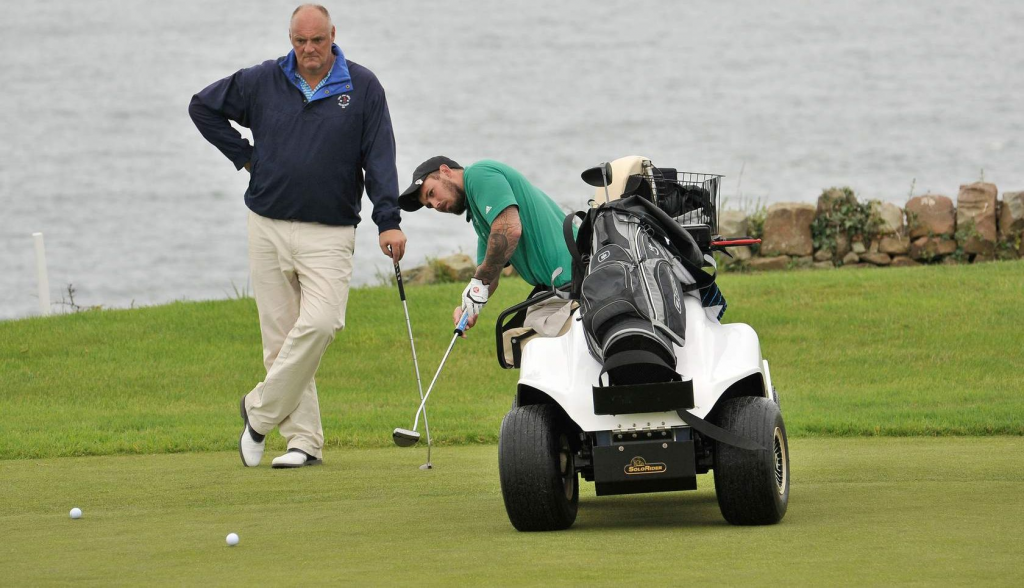
Adaptive golf cars are designed with both the golfer and the golf course in mind. Each car presents advantages that can be unique to the individual in terms of comfort and capability.
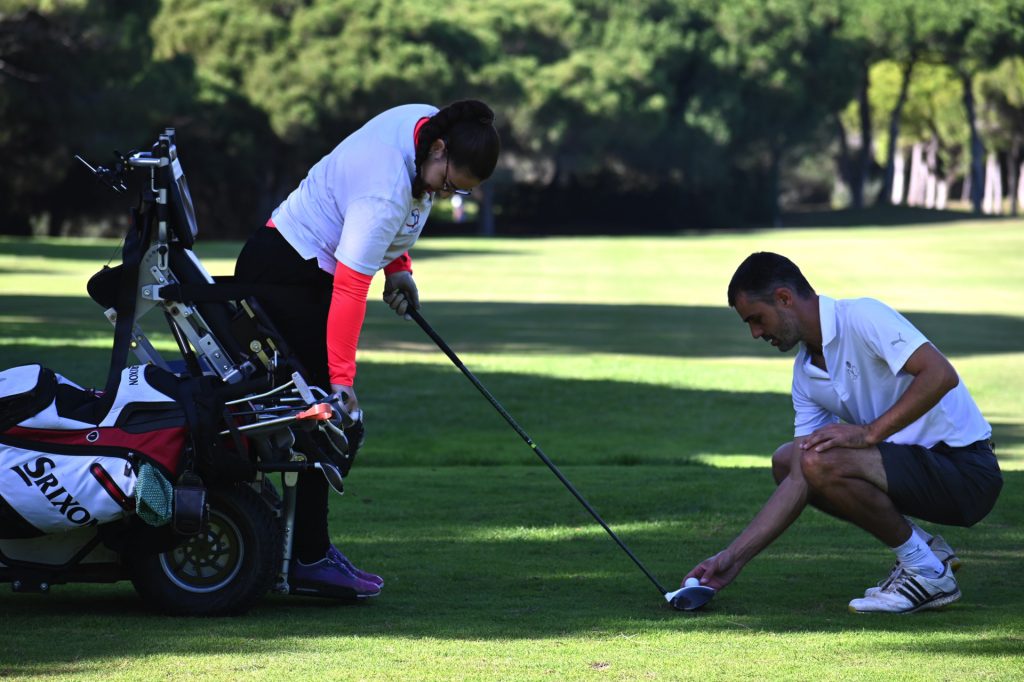
Myth #1: Adaptive golf cars cause more damage to the golf course than other golf cars
- Adaptive golf cars are designed and tested with golf course care in mind, specifically in the areas related to vehicle weights, wheel base, tire and tread size, and PSI ground forces.
- When operated under normal course conditions, or conditions when other vehicles are permitted on the golf course, adaptive carts have no more negative effects on the course itself than other golf cars or maintenance vehicles.
- Adaptive golf car owners/users are keenly aware of the concerns golf course operators may have. They often exercise greater caution than most golfers when operating on or near greens and teeing grounds to avoid any real or perceived opportunity for damage.
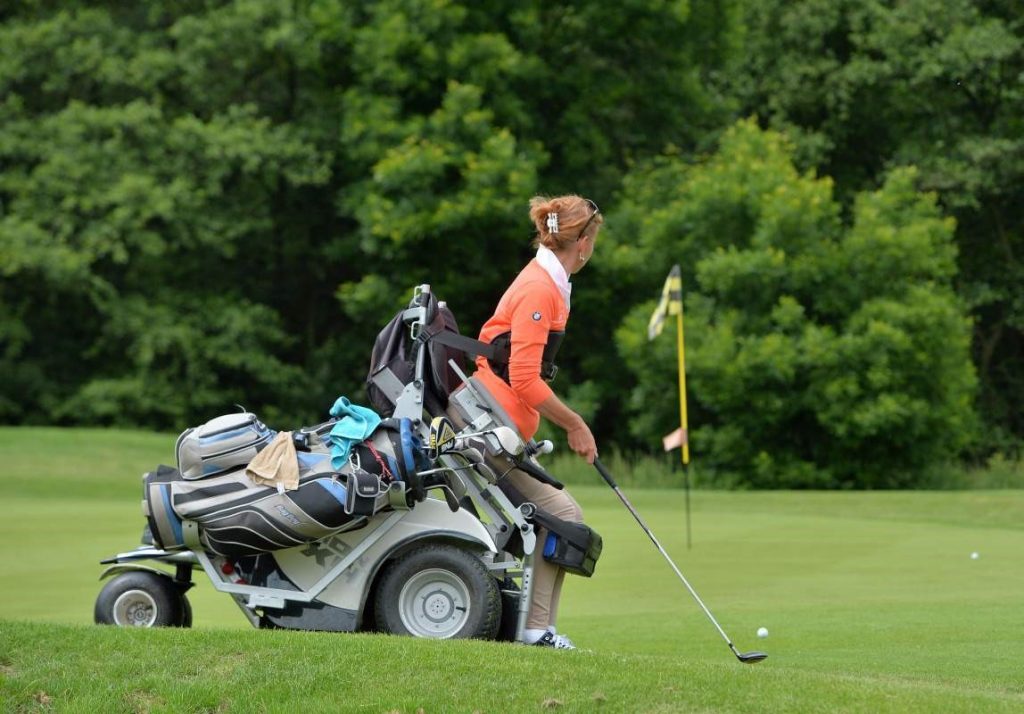
Myth #2: Adaptive golf cars are unsafe
- When an adaptive golf car is purchased by an individual, or in many cases, provided by a charitable organisation to a golfer, the manufacturer and/or the organisation will train the user on how to safely operate their golf car and understand the limits of the design. They are no more, or no less safe than a typical golf car when either are operated correctly.
- As is the case with a typical non-adaptive golf car fleet, safety is always a concern and results in many courses having customers sign liability waivers. Safe to say, accidents still happen. Whether the course is providing an adaptive golf car or if it is privately owned, we recommend treating ALL customers the same and have them sign Liability Waivers that include a User Operating Agreement to increase the facility’s comfort factor on safety, course maintenance awareness and experience of the user, whether an adaptive golf car or not.

Myth #3: Golf courses are required to permit additional course access regardless of the situation
- For municipal, government, and public golf facilities, legislation requires a business to provide the same level of access to the goods and services it offers to everyone. The golf course is one of the “goods and services” offered by a golf facility. An operator is always permitted to protect its product (the golf course) from damage, but should be consistent in the application of policies for all golfers. Published policies that address these issues when adaptive golf cars and/or additional access will be permitted when other golf cars may be restricted are recommended.
- In order to not be perceived as “denying access”, it is in your best interest to publish the availability of adaptive golf cars at your facility, even if shared with another property nearby. You can not ask someone if they have a disability, nor can you require them to call ahead. You can, however, recommend golfers who may need additional access or an adaptive golf car to call ahead to facilitate a positive customer experience at your facility. The overwhelming majority of golfers with adaptive golf car requirements will do this and are not seeking conflict by just showing up and expecting you to have the vehicle.
- As interest grows in the golf for the disabled space, the number of golfers that require adaptive golf cars is on the rise. It is in a golf facility’s best interest to seek an adaptive golf car solution that eliminates a potential denial of access situation.
Identify the mobility device which the golfer will play from:
The Para-Motion is a mobility device that elevates the player into a golf-specific posture. These devices have many benefits for players with spinal cord lesions (SCL), although due to their high costs, they may not always be available to introduce a new player to the game.
The seat of an adapted mobility device can often be rotated to play from a seated position. Many everyday mobility devices can be easily modified to accommodate an effective seated playing position for golf.
The standard wheelchair can often be used to help new players sample the game. Accessibility and affordability are key considerations for players and coaches until more specialised and expensive devices are explored as the new golfer reaches the participant level. A standard wheelchair can provide a good starting point and will require some adaptation and securing with straps to help the coach identify the optimal positioning for the individual when using a full swing. With the evolution of simulated golf providing an excellent entry for a standard wheelchair user as they are not challenged with navigating the golf course.

The following key considerations highlight the approach required to initiate a new participant playing from their standard wheelchair;
- No two athletes are the same. Each has a unique physique, strength, balance, physical or learning ability.
- Due to mobility restrictions, initial sessions from the standard wheelchair should take place on the driving range.
- Ensure your facility/coaching environment will provide access for wheelchair users.
- Generally, the first stage of working with seated golfers is to establish the seating/body position that works best with the athlete’s functional abilities.
- Every seated golfer will develop a unique style regardless of ability; what works with one seated golfer may not work with another. Be prepared to adapt and create challenges to make the sessions explorative and player led.
- An effective coach will experiment to determine what works best for each seated golfer. As a basic rule, more time is needed for skills to be practised, developed, and achieved to maximum ability when working with disabled athletes.
- Experiment with different positions. Positioning the chair into ‘open rotation’ and getting players to experiment with one hand can help generate speed. Decrease targets and distances to make things easier and more achievable.
- Have adapted equipment available. Clubs of different lengths, weights, sizes, handle sizes, and lie angles can accelerate a seated player’s learning and self-exploration.
- The same golf-specific drills as those for a non-disabled golfer will be relevant within the functional boundaries of the individual golfer.
- Learn to communicate and demonstrate golf shots from a seated position. This will also develop your understanding of a seated golfer’s potential constraints.
- As seated golfers play from a seated position, drills involving the upper body and arms will be the most prominent. However, a holistic approach to training is encouraged, and drills and movements involving leg and hip function should be included for golfers with this available function.

- Only a tiny percentage of wheelchair users cannot mobilise without their wheelchair. Help your participants make their own choices about whether/when they want to use their wheelchair. Do not assume.
- When talking to a wheelchair user, do so from a comfortable position for both of you. Sitting on a chair at the same eye level as the other person is often the simplest way.
- Talking to the participant can identify if they would benefit from additional strapping (readily available from mobility specialists), which can enhance balance, improve mobility and assist in developing clubhead speed and solid contact. Below is a small list of strapping which may help in your sessions:
- Chest and waist straps: These can improve balance and often confidence but can hinder reaching and rotational movement if not properly adjusted. Wrist straps may assist the individual in developing speed and can be very useful if the player is playing with one arm.
- Leg straps: A strap around the thighs or just above the knees prevents the legs from spreading and keeps the body moving as a unit. A strap in front of the knees or shins keeps the legs back and can assist in maintaining sufficient forward bend if required to secure consistent contact.
- Foot straps: These keep the feet securely on the footpad when turning or during leg spasms.
Player Stories
Gain further insights to how seated golfers play via the EDGA Player Stories – Click on the following images to read and listen to a selection of interviews
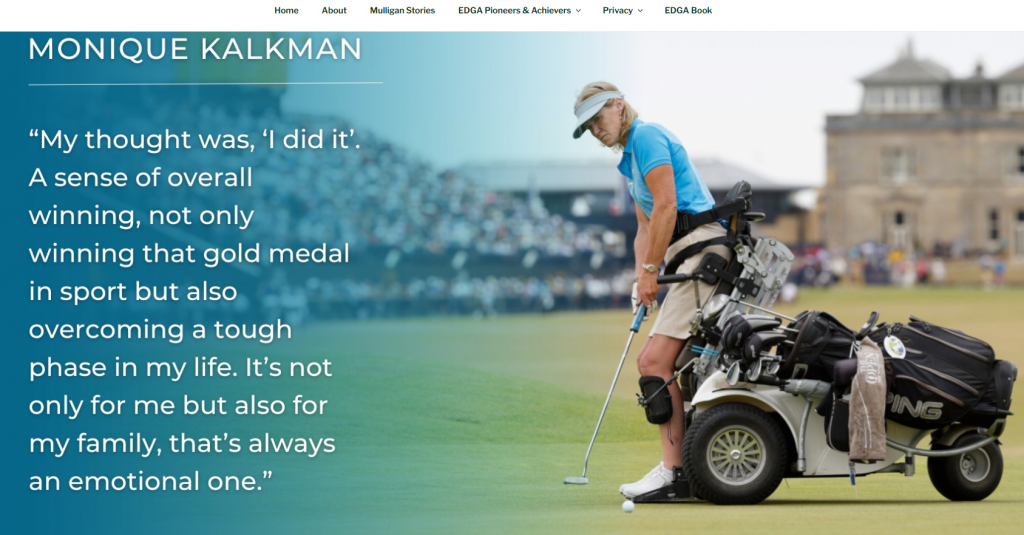
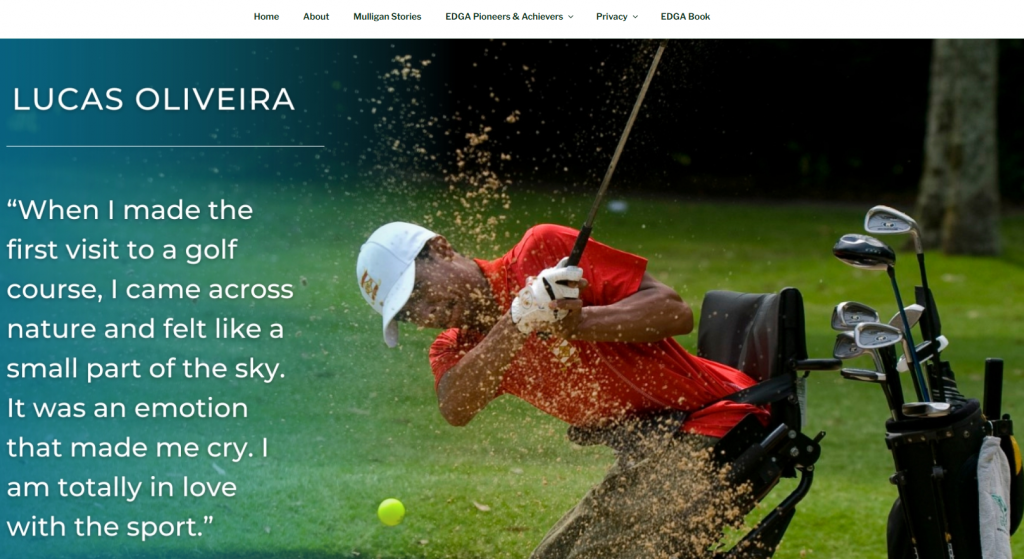
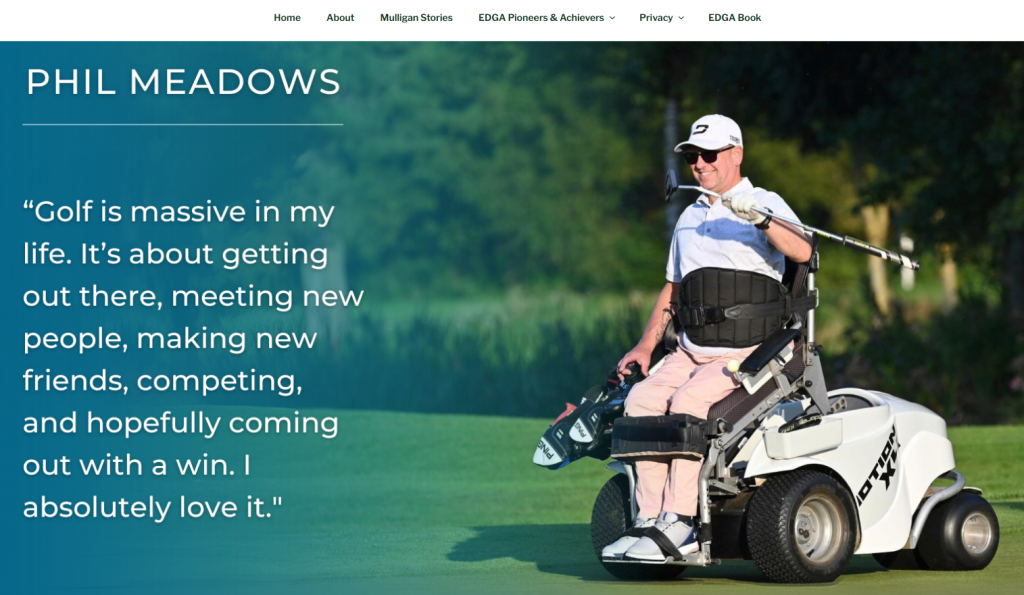
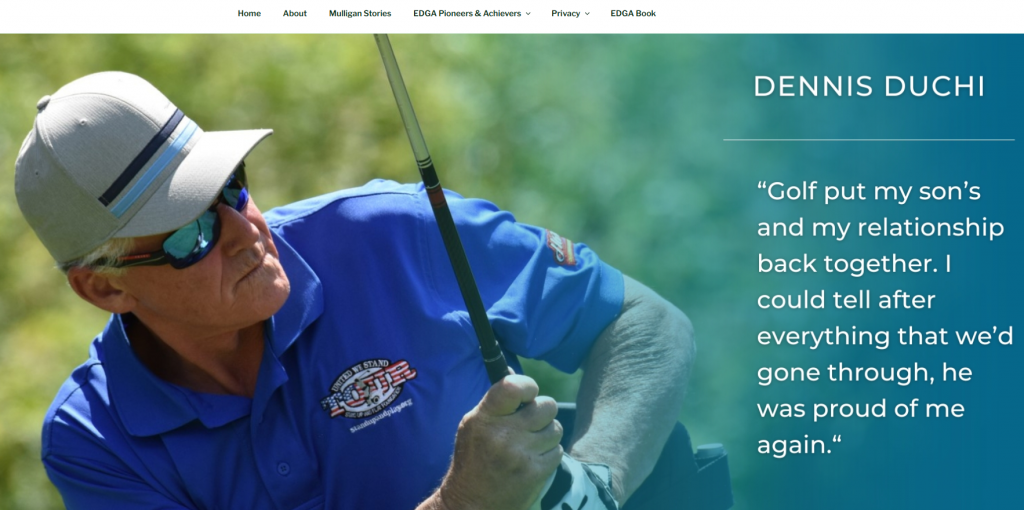
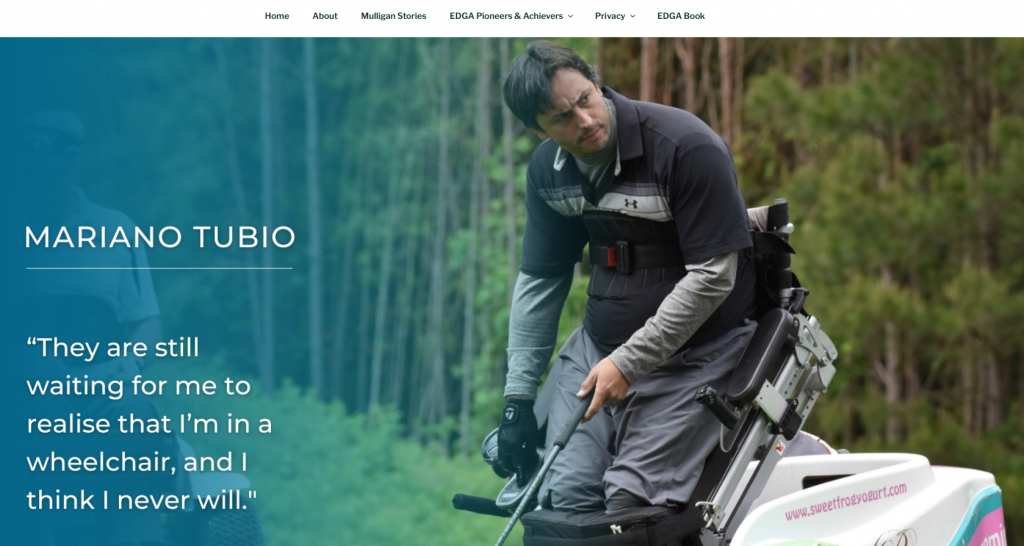
Further Player Stories can be found via clicking on the image link below:

*This material remains the intellectual property of the EDGA development team and may not be distributed or used further without written consent from the EDGA development team.
